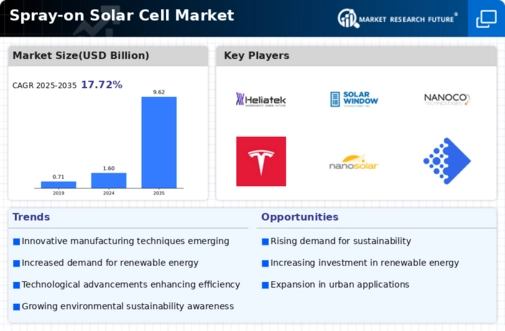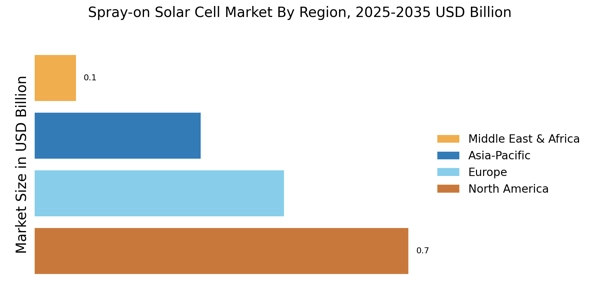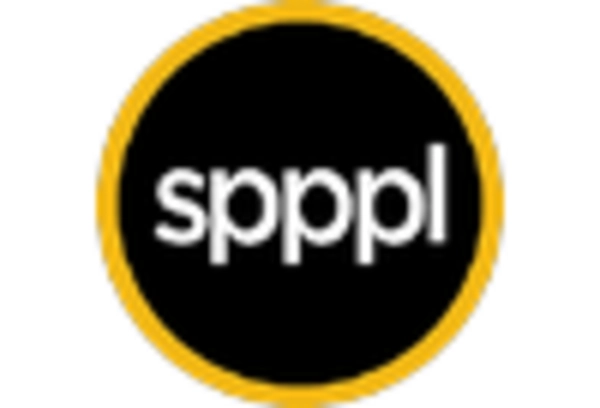Environmental Regulations and Incentives
The Spray-on Solar Cell Market is also shaped by stringent environmental regulations and incentives aimed at promoting clean energy technologies. Governments worldwide are implementing policies that encourage the use of renewable energy sources, including solar power. In 2025, many countries are expected to offer tax credits, rebates, and grants for the installation of solar technologies, including spray-on solar cells. These incentives not only lower the financial barriers for consumers but also stimulate market growth by increasing awareness and interest in sustainable energy solutions. As environmental concerns continue to rise, the regulatory landscape is likely to favor the adoption of innovative solar technologies, further benefiting the spray-on solar cell market.
Versatility in Application and Integration
The versatility of spray-on solar cells is a key driver for the Spray-on Solar Cell Market. These cells can be applied to a wide range of surfaces, including buildings, vehicles, and even clothing, which opens up numerous possibilities for integration into everyday life. As of 2025, the ability to seamlessly incorporate solar technology into various products is becoming increasingly appealing to manufacturers and consumers. This adaptability not only enhances the aesthetic appeal of solar solutions but also allows for innovative designs that can blend with existing structures. The potential for diverse applications is likely to attract a broader customer base, thereby expanding the market and encouraging further research and development in spray-on solar technologies.
Growing Demand for Renewable Energy Solutions
The increasing global demand for renewable energy solutions significantly influences the Spray-on Solar Cell Market. As nations strive to meet their energy needs sustainably, the adoption of solar energy technologies is on the rise. In 2025, the solar energy sector is projected to account for over 30% of the total energy generation in several regions. This shift towards renewable energy sources is driven by government policies and incentives aimed at reducing carbon emissions. Consequently, the Spray-on Solar Cell Market is poised to benefit from this trend, as these innovative solar solutions offer a versatile and efficient means of harnessing solar power, appealing to both residential and commercial sectors.
Cost-Effectiveness of Spray-on Solar Technology
Cost considerations play a pivotal role in the Spray-on Solar Cell Market. The production costs of spray-on solar cells have been decreasing due to advancements in manufacturing processes and economies of scale. As of 2025, the cost per watt of spray-on solar cells is projected to be significantly lower than that of traditional solar panels, making them an attractive option for consumers and businesses alike. This cost-effectiveness is likely to drive adoption rates, particularly in regions where budget constraints limit the deployment of conventional solar technologies. The affordability of spray-on solar cells could potentially democratize access to solar energy, fostering a broader acceptance and integration of renewable energy solutions.
Technological Innovations in Spray-on Solar Cells
The Spray-on Solar Cell Market is experiencing a surge in technological innovations that enhance the efficiency and applicability of solar cells. Recent advancements in materials science, particularly the development of perovskite-based solar cells, have shown promising results. These innovations allow for the production of lightweight, flexible, and highly efficient solar cells that can be applied to various surfaces. As of 2025, the efficiency of spray-on solar cells has reached levels exceeding 20%, making them competitive with traditional solar technologies. This technological evolution not only broadens the potential applications of spray-on solar cells but also attracts investments from both private and public sectors, further propelling the market forward.



















Leave a Comment